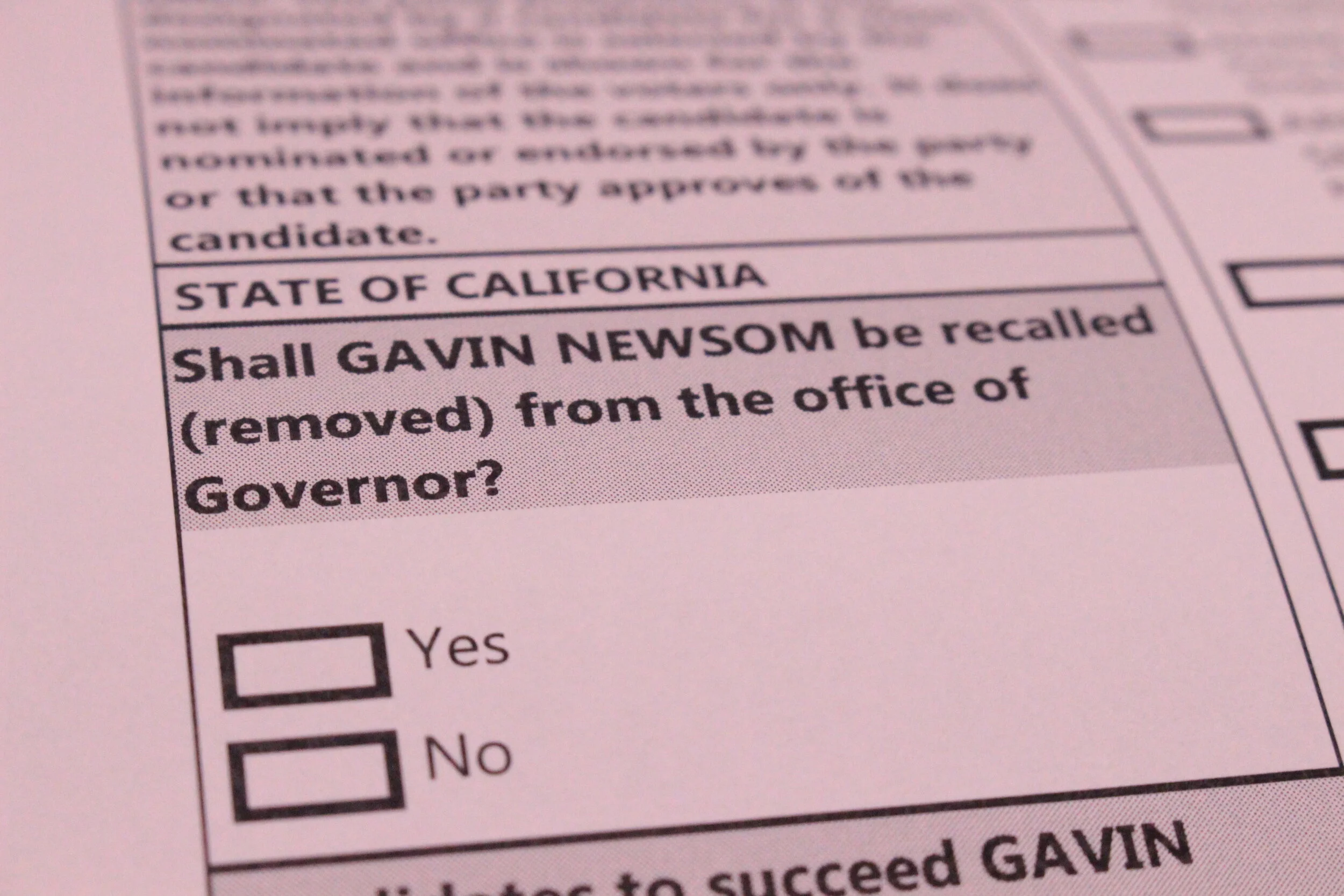Editorial | Power to the people: California voters have direct influence over recall election turnout
California Governor Gavin Newsom faces off against 46 opponents in the state’s 2021 gubernatorial recall election, where turnout will be determined by popular vote. KATIE REUL, Editor-in-Chief
Glancing through the ballot for the 2021 California gubernatorial recall election doesn’t take long: it’s only one page, consisting of two questions. First, if California Governor Gavin Newsom should be recalled, and second, who should be elected to take the governor’s place.
It’s light reading in comparison to the lengthy ballots distributed during a typical presidential election. But, despite the state’s positive-effacing 88.87% voter registration rate, only 37% of ballots have been cast as of Sept. 12. Today is the last day for Californians to get their votes in, though any mail-in ballots will still be accepted upon receival by the corresponding county elections office until Sept. 21 if postmarked by Sept. 14.
The 2020 presidential election saw the highest voter turnout of the 21st century at 66.3%, even in the wake of the coronavirus pandemic. So, one thing’s for certain — U.S. voters are increasingly politically engaged. However, this engagement is far less prevalent in “primary elections, off-year elections for state legislators and local elections” than in presidential elections, according to Fair Vote.
But, the stakes of not voting in the recall are far greater than those of skipping the polls in a presidential election. An oft-perpetuated argument for voter apathy in a presidential election year is that one’s vote doesn’t “count” as a result of the nation’s continued reliance on the electoral college system. In this circumstance, there are no additional barriers, like 598 electors, obstructing the votes of Californians from having direct influence on the election turnout.
Newsom’s fate will be determined by the popular vote. In order to maintain his status, he’ll have to win more than half the votes. Otherwise, he’ll be replaced by the leading opponent — even if they have fewer votes overall.
This essentially provides a “curve” to the 46 opposing candidates on the condition that Newsom fails to meet this minimum requirement, similar to the manner in which a teacher adjusts their grading standard based on the highest test score in the class. If Newsom doesn’t reach the 50% mark, it doesn’t matter if his leading opponent has only four votes — they’ve won.
Since 1913, there have been 179 recall attempts of state elected officials in California, 55 of which have been directed at governors. The only time one of these attempts resulted in a governor recall was against former Gov. Gray Davis in 2003, which saw about two-thirds of registered California voters participate.
So, when Orrin Heatlie, an ex-sheriff with no prior political experience, filed the paperwork to petition Newsom’s recall in February 2020, few noticed. His first attempt Feb. 13 failed to qualify for the ballot, but his second attempt, submitted Feb. 21, garnered much more attention.
Initially, the petition was slow to gain traction. If the Sacramento County Superior Court hadn’t granted Heatlie and his team an additional four months to collect the 1.5 million signatures required by the state to hold a special election, they would have missed their original Nov. 17 deadline by a long shot.
After a publicity fiasco where Newsom was spotted attending a maskless dinner party at an upscale Napa Valley restaurant Nov. 6, Heatlie witnessed a surge in support for the petition. By December, the document amassed over 500,000 signatures, as claims of Newsom’s hypocrisy and elitism circulated on both sides of the political spectrum.
Over the next four months, Heatlie would acquire over 1.6 million signatures by the new March 17 deadline as the governor came under fire — even among Democrats — for his response to the COVID-19 pandemic and unprecedented implementation of executive orders.
We’ll be honest: it’s not a good look for Newsom.
But the alternative to voting “no” on the recall is far worse; many of Newsom’s GOP opponents intend to roll back mask and vaccine mandates, leaving the state vulnerable to continued COVID-19 outbreaks in the wake of the Delta variant. And in the circumstance one of these candidates is elected, coming into the role during an ongoing pandemic is a recipe for complete legislative disarray.
In Orange County, a former stronghold for conservatives in the middle of a blue state, it seems that some residents have yet to make up their minds. A recent California Talks survey shows exactly 50% of likely voters in the county said they wanted to remove Newsom. Forty percent of likely voters said they were not sure who to support or were planning to leave that question blank.
In this election, the passivity of voters cannot be justified by a reliance on the Electoral College to vote in favor of candidates who represent the state’s predominant party affiliation. Each individual vote is crucial to determining the outcome of the recall.
If you still haven’t cast your ballot, the Orange County Registrar of Voters and Chapman’s Civic Engagement Team will continue to host a Vote Center in Argyros Forum 119B today from 7 a.m. to 8 p.m. Students can return their mail-in ballots at the site as well.
The Vote Center in Argyros Forum. KATIE REUL, Editor-in-Chief


